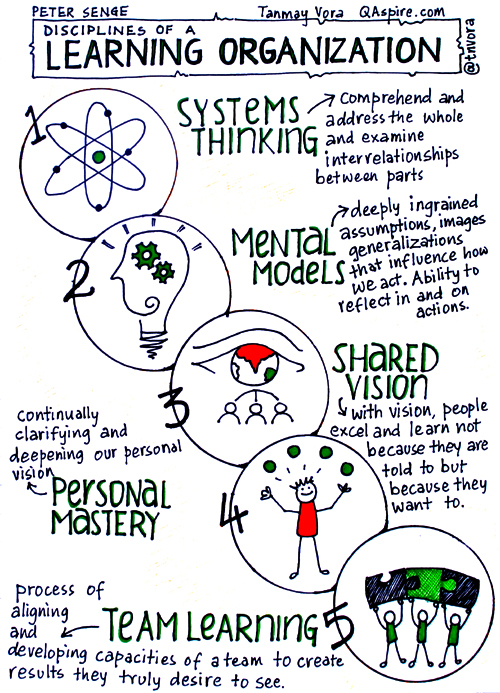How do we create the conditions for people to work at their best?
Agile organisations adapt.
To adapt successfully we need to learn.
To learn we need to listen.
To listen we need to trust each other.
No trust > No listening > No learning > No adapting > No agility.
Adapting at scale requires trust and listening at scale.
The alternative is to scale management and control.
Peter Senge, author of the The 5th Discipline, codified some of the disciplines that he observed the most innovative managers using.
He believes that organisations either have a learning character or a controlling character and that if we want to encourage systemic learning these 5 disciplines will support the journey.

So what are the 5 disciplines?
1. Systems Thinking
2. Mental Models
This refers to having a shared set of mental models that guide a team and organisation on how they work and interact with each other e.g. “Agile” & “Design Thinking”. Sometimes these are explicit and written down but often they are implicit and just form part of “how things are done around here”. With changes in leadership, this can be a time when expectations become misaligned, results not realised and painful transitions can be experienced.
